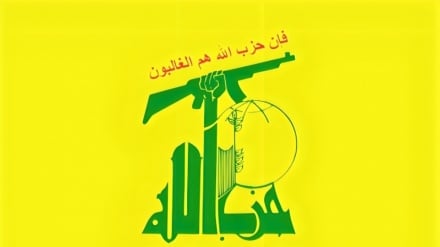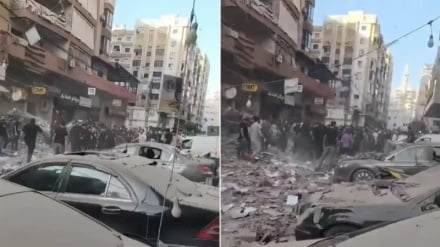Hezbollah's prowess scares Zionist Israel
Few serious analysts doubt that Hezbollah defeated Israel in 2006. Even the New York Times was forced to admit this in its analysis of the Israeli-imposed war.
The defeat at the hands of Hezbollah was so crushing that Tel Aviv has avoided confrontation with it in the 11 years since. Hezbollah had a deterrence capability before the Zionist attack of 2006. When Major General Gadi Eizenkot, head of the Israeli armed forces’ operations branch, heard that strikes were ordered against Hezbollah Fajr rocket sites, he said, “We have to stop everything, they don’t realize what this means.” The fear was that Hezbollah's retaliation would endanger the northern front with a hail of rockets and other weapons. In the period between 2006 and 2015, surface to surface missiles (SSM) and rockets in Hezbollah's possession are said to be in the range of 150,000. The Washington Institute in early 2015 exposed the vulnerability of Israel in relation to the surface-to-surface attacks when it said:
According to Israeli intelligence estimates, Hezbollah would likely attempt to sustain fire of around a thousand rockets and missiles per day, dwarfing the approximate daily rate of 118 achieved in 2006. Perhaps more important, Hezbollah now has missiles with the range and accuracy to strike large strategic targets such as airfields, headquarters, and economically important sites. An operation of this nature could overwhelm Israel’s anti-rocket systems. The weight of the attack would fall on northern and to a lesser extent central Israel, but Hezbollah can now reach targets in the south as well.
This does not only change the balance of the war but shifts it dramatically in Hezbollah's favour. Of greatest concern to Israel is the alleged possession of SA-17 and SA-22 ground-to-air missiles as well as P-800 Oniks air-to-sea missiles. The SA-17 and SA-22 now pose the greatest threat to the Zionist air superiority, which provided an edge over Hamas and Hezbollah non-state actors during Israeli military operations.
Hezbollah's public pronouncements have also changed from talking about defensive to offensive operations against Zionist Israel. Nadav Pollak, a former analyst for the Zionist regime, who also served as an NCO in Israeli army Intelligence Corps, gave a lecture in August 2016 entitled, “The Transformation of Hezbollah by Its Involvement in Syria.” He detailed how offensive capabilities have now become part of the range of operations that may be conducted against the Zionist regime. He said,
This type of offensive experience could change the basic paradigms of many Hezbollah fighters. Naturally, some Hezbollah commanders who achieved important objectives using offensive operations in Syria might ponder that the same approach could work against Israel.
This opens a new range of options against Israel. Unlike 2006 in which the fake Zionist regime crossed the border into Lebanon to conduct operations, now Hezbollah will be able to carry out operations inside Israeli- occupied Territories. This is the edge of the psychological warfare that has been deployed by Hezbollah.
The most recent development is the unexpected presence of Hezbollah and Islamic Revolutionary Guard Corps (IRGC) along the Golan border. Even Moshe Yaalon, the former Israeli Chief of Staff and Minister of War and Carnage, in his lecture at the Washington Institute referred to this. He said “We haven’t absorbed a single Jihadist attack from the Syrian side. We did absorb about a dozen IRGC proxies.” Throughout the war on Syria, the fabricated Zionist regime was providing medical and material aid to all terrorists on the Golan border. This picture changed in the latter part of 2016 and 2017. An announcement was made by the IRGC of the creation of a new division of force known as the Golan Liberation Brigade which is alleged to have 10,000 or more soldiers. The development of a new front against the Zionist regime spurred Prime Criminal Benjamin Netanyahu to frantically lobby the US and partner Jordan to demand a buffer zone. This underscores how scared Israel is of the IRGC and Hezbollah presence. It, therefore, stands to reason that the threat on the northern front has been the most pressing for the Zionist regime with the developing eastern front effectively enclosing Israel. To the Zionist military establishment, one would be looking at the first tangible existential threat to Israel since the 1973 Yom Kippur war.
Combining the pictures of then and now, we can effectively question the Syrian theatre of operations and acknowledge that hegemony was indeed being threatened and drastic action was required.
How to weaken Hezbollah and check its ability to enhance its capabilities was the question that was mulling around in the minds of Zionists as well as their PGCC lackeys. The natural answer was to attack the transit point of training and weapons: Syria. This knowledge was present in 2006 when Zionist officials stated that they were seeking to stop weapons from being supplied to Hezbollah via Syria from Iran. In Pollak’s lecture at the Washington Institute, he made specific reference to the strategic importance of Syria for the Resistance Front. He said in his written report,
To understand the depth of Hezbollah’s commitment to Syria, one must understand the extent to which Syria is Hezbollah's logistical lifeline. For years, weapons have been delivered through Syria to the group by air and land. Using Syria as its main transit hub, the Quds Force of Iran’s Islamic Revolutionary Guard Corps (IRGC), has made sure Hezbollah’s arsenal has grown over the years in quantity and quality. Syria itself has contributed to Hezbollah’s military supply, mainly in the form of advanced anti-tank missiles along with rockets and other missiles. Reports also indicate that Hezbollah has maintained training camps in Syria and logistical bases for weapons storage. Beyond serving as a transit hub for weapons, Syria has done the same for Hezbollah fighters. Indeed, a key part of Hezbollah’s training routine over the years involved travelling to Iran through Damascus airport.
It is common cause that Syria was also at the heart of arming and training the Palestinian resistance movements as stated in the congressional report, “If sanctions weaken Iran and Syria in general terms, one could argue, resources and efforts allocated to helping Hamas and other potential proxies could be redirected to core internal matters related to regime survival.” Damascus was also home to Hamas and served as a local tower that allowed free movement and interaction while being close enough to Palestine.
That was authored Zaakir Ahmed Mayet who is Chairman of the Media Review Network of Pretoria, South Africa.
ME


